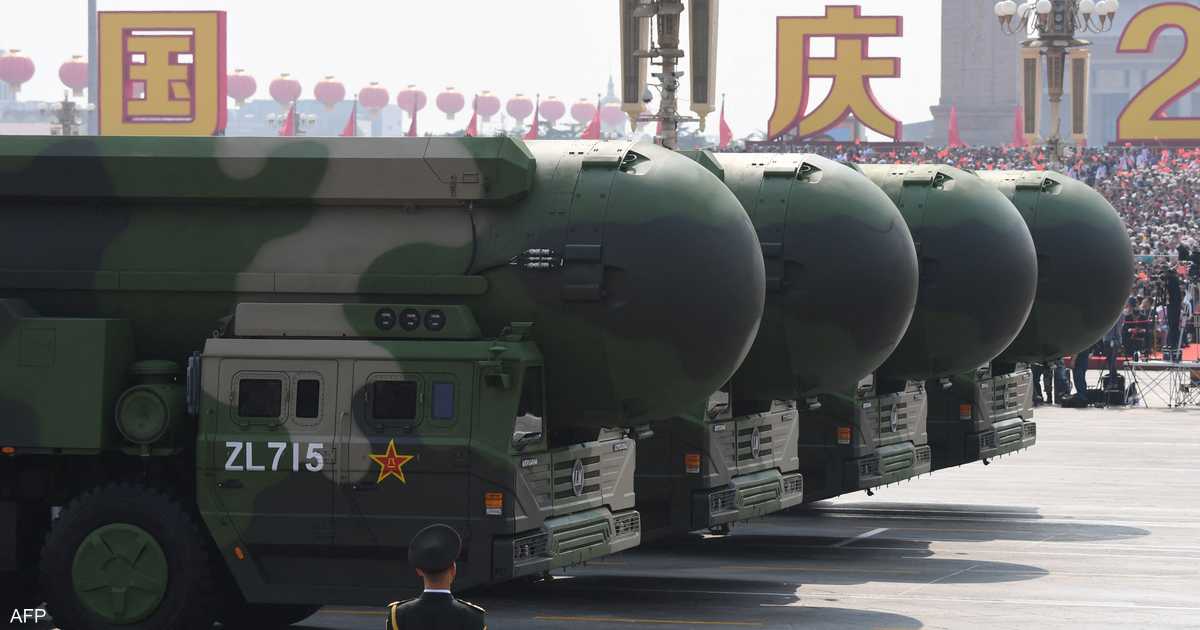Deadly missile “not easy to handle”
Such missiles usually carry a nuclear warhead, but this missile will, uniquely, be armed with conventional explosives, according to a new report from The Telegraph.
This military organization is well known to the Pentagon, which attempted for years to develop the same type of “conventional non-nuclear” ICBMs, only to give up when it realized the potential risk such a weapon posed.
Washington realized that if it launched an intercontinental ballistic missile, nuclear-armed countries would detect the launch, be unable to distinguish it from a nuclear missile, and might be encouraged to launch their own nuclear weapons.
American warning
In its latest annual report, the Pentagon warned about China’s military capabilities and that “conventionally armed intercontinental ballistic missiles will pose serious threats to strategic stability.”
The Chinese military possesses 350 intercontinental nuclear missiles with global range, the third largest nuclear missile arsenal after America and Russia, as well as 2,500 conventional medium- and short-range ballistic missiles and 300 air-launched cruise missiles.
A new missile… horror for Washington
Despite their destructive power, the PLA’s short- and medium-range ballistic missiles and cruise missiles are the type of munitions that U.S. forces know how to defeat.
Over the past few decades, the U.S. Missile Defense Agency has spent hundreds of billions of dollars providing the U.S. Army, Navy and Air Force with sensors to detect incoming missiles and cruise missiles, as well as special missiles to shoot them down.
However, none of these defenses work against ICBMs. At least none of them work very well. An intercontinental ballistic missile travels much faster than any other missile.
The Pentagon knows it cannot reliably shoot down conventional Chinese ICBMs.
“If these capabilities are developed and deployed, they will enable China to conduct conventional attacks against targets in the United States, Hawaii and Alaska,” the Pentagon warned in its latest report.
Confused weapon
If the Americans cannot distinguish between a nuclear ICBM and a non-nuclear ICBM, and cannot even guarantee that they can shoot down an incoming ICBM, they must treat every launch of an ICBM as a potential nuclear attack and respond accordingly.
If Beijing placed a non-nuclear warhead on top of an intercontinental ballistic missile, the United States would be among those countries that would be unable to identify the type of incoming missile, which could cause great confusion and potentially lead to disastrous military consequences. action.
According to the Telegraph report, the danger is evident. There are no treaties regulating missile development in China. There are few diplomatic or economic tools the United States can use to coerce China from pursuing a powerful new military capability.
A terrifying scenario, if China deploys a conventional ICBM, is that the United States eventually deploys one as well. We may realize that in the next stage nuclear war may be the result of a “misunderstanding”.
(tagToTranslate)Weapons

